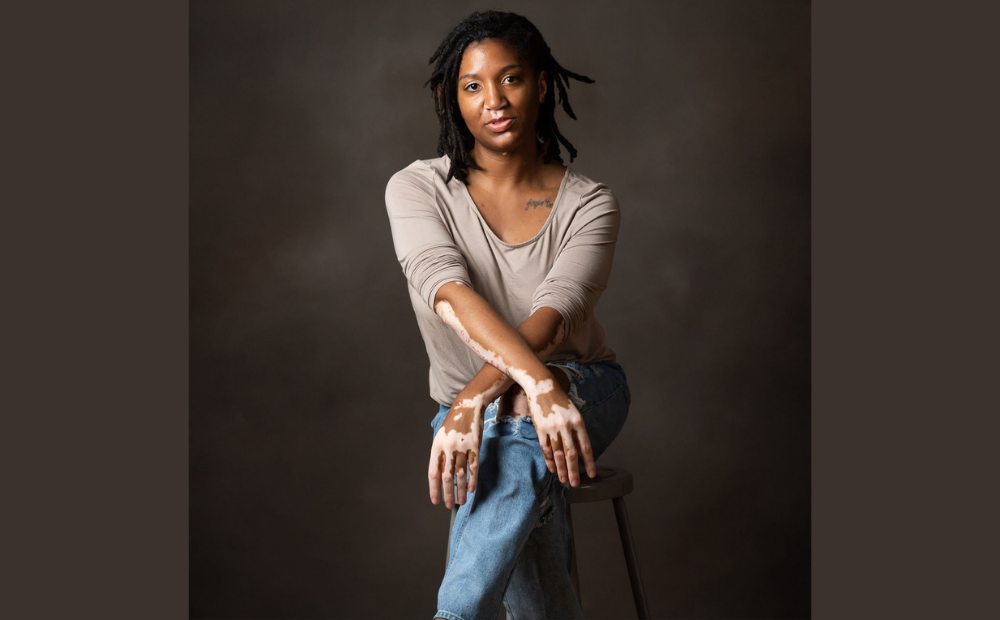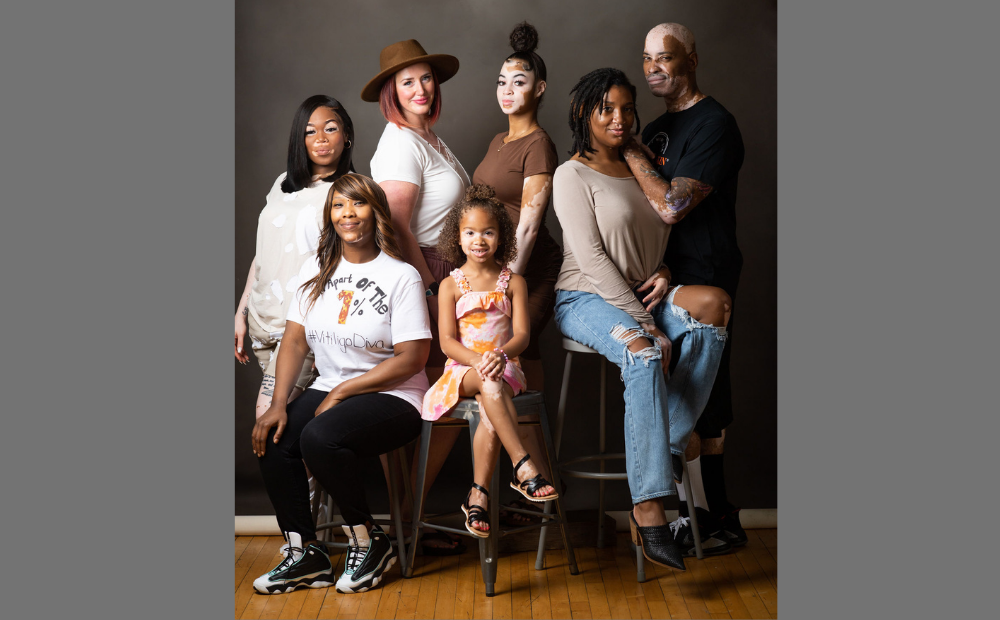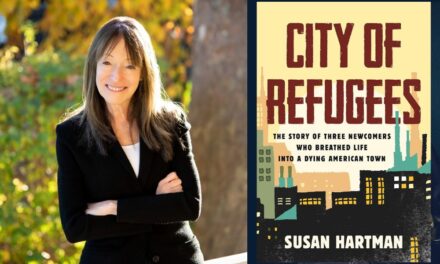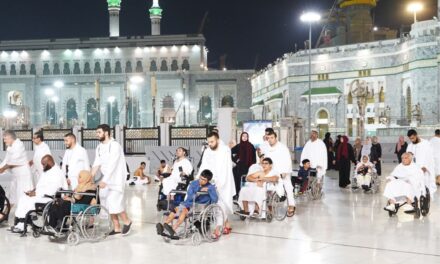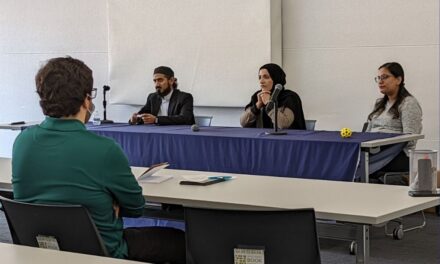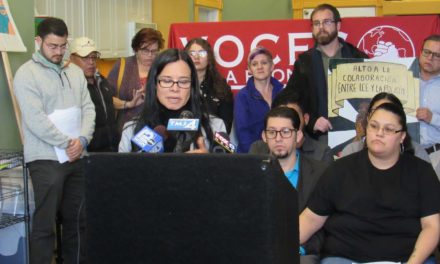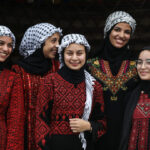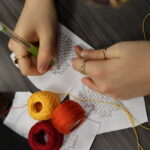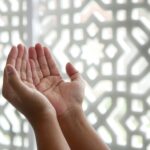Two Muslim women volunteered their time and talents to help Visibly Imperfect Perfect create a photoshoot in Wisconsin celebrating people with vitiligo.
A serendipitous connection between a medical student, a therapist and a photographer led to a unique project in Milwaukee that highlights the beauty of individuals with vitiligo, a condition that causes white patches to develop on the skin, and teaches us all to redefine beauty.
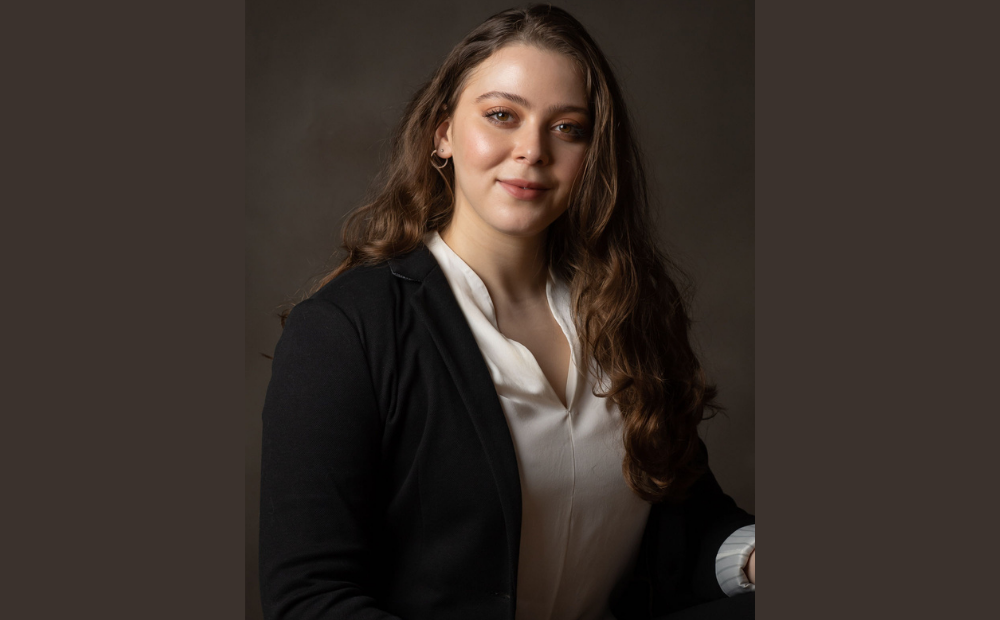
Nadine Abouchaleh is a fourth-year medical student at the University of Illinois-Chicago. She volunteers with organizations supporting the vitiligo community.
The medical student
Nadine Abouchaleh is a fourth-year medical student at the University of Illinois – Chicago who has always been interested in dermatology. Third and fourth year medical students practice clinical skills in rotations, assigned shifts at healthcare sites in a variety of specialties (internal medicine, pediatrics, surgery, etc.).
In her first rotation, Abouchaleh found herself in dermatology at UIC Hospital where she saw many people from communities of color. She became interested in those experiencing vitiligo, thought to be an autoimmune condition where the body’s defenses turn on its own cells. In this case, pigment-forming cells are destroyed, leaving white patches on the skin.
About 1 % of the population has vitiligo. And although it affects all ethnicities equally, it is more noticeable in dark-skinned people.
“Vitiligo is not physically painful or cancerous or contagious. It won’t kill you,” Abouchaleh said in an interview with the Wisconsin Muslim Journal. “But sometimes it is difficult to cope with diseases that are visible. They affect the quality of your life.
“When we get to see patients in a clinic, we see them for such a short time,” she continued. “We don’t know what happens in their lives between visits.”
Abouchaleh’s curiosity led her to learn more about vitiligo. She also read studies about its psycho-social impacts on people of color.
“Michael Jackson had it,” she noted. He was diagnosed with vitiligo in 1986. Public speculation about why his medium brown skin turned paler from the mid-eighties included accusations that he was trying to appear white.
Jackson reported using the Food and Drug Administration’s approved treatments, she said. This may have included skin-bleaching creams and fair-colored makeup to make the patches less noticeable. His condition was also treated with anti-inflammatory steroids to suppress the immune system, she said.
Abouchaleh began searching for volunteer opportunities and found Tough Skin, an empowerment organization for people with vitiligo, and the Global Vitiligo Foundation, headquartered in Chicago. It aims “to improve the quality of life for individuals with vitiligo through education, research, clinical care and community support.”
To raise awareness of the condition, Abouchaleh did an educational presentation online for World Vitiligo Day, which takes place on June 25 each year, the anniversary of Michael Jackson’s death.
Her desire to volunteer with this community led Abouchaleh to therapist Andre Joachim, founder of the non-profit Visibly Imperfectly Perfect (VIPerfect), an organization with the mission of “providing support, education, awareness and advocacy for characteristically unique individuals, their families, and the global community.”
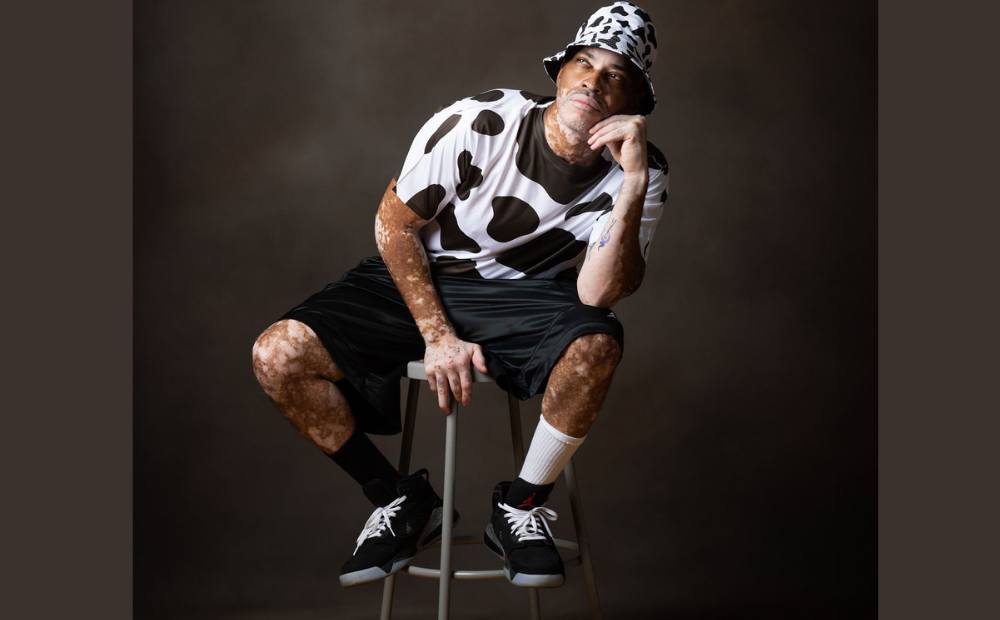
Andre Joachim is founder of Visibly Imperfectly Perfect, which held a photoshoot in Milwaukee celebrating people with vitiligo.
The therapist
Therapist Andre N. Joachim, Jr., is a doctoral candidate at Northern Illinois University, studying the psychological, social and emotional impacts of vitiligo. He also has vitiligo himself.
Joachim founded Visibly Imperfectly Perfect (VIPerfect) in 2019 to raise awareness, educate, support and serve the global vitiligo community and others who are “characteristically unique.”
VIPerfect helps people “live with characteristically unique physical features by centering on living a less stressful and more meaningful life,” Joachim told the Wisconsin Muslim Journal in a recent interview over Zoom.
Wearing a T-shirt with the slogan, “Limits like fear are often an illusion,” Joachim shared his journey from diagnosis to self-acceptance, and his approach to life:
“What is a meaningful life? A meaningful life is knowing you can do anything that you choose to do without feeling fear, rejection, discrimination or being subjected to any type of social bias or trauma.”
The effects of vitiligo appeared on Joachim’s skin when he was 18.
“I was scared. I didn’t know what it was.” He had been bitten in a fight and there was a lot of fear of HIV at the time so he decided to be tested. The doctor didn’t really know what it was but the test ruled out HIV/AIDS. He asked Joachim to return for a follow-up visit in six months.
Meanwhile, his brown pigment returned and Joachim breathed a sigh of relief. But as his appointment neared, he started losing pigment again. Worst-case scenarios filled his thoughts.
At the check-up, the doctor diagnosed vitiligo and assured him he wouldn’t die. He was told the condition might progress or might regress, and if it progressed, he could use bleaching creams to even his skin tones. He was also given medications but didn’t continue taking them.
The vitiligo did progress. By the time he was 19, “I’d look at myself in the mirror and see a little bit on my forehead and face. It was spreading on my fingers. It was a very hard part of my life.
“As it continued to spread, I was left with all these doubts and insecurities. I was questioning my identity. Am I turning white? What am I going to look like in another two to three years? Will I be able to get a partner? Will someone ever desire me?
“It put a damper on my socialization. I had been a lot more outgoing. I started wearing hoodies and gloves. I felt like I was living under a cloud.”
Five years later, when Joachim was about 70% depigmented, a trip to a barber changed his perspective. “He said to me, ‘Man, your vitiligo is so beautiful! It is a blessing.’
“I said, ‘No, it is a curse.’
“’Why?’
“’Because I stand out.’
“He said, ‘Look around at everybody here. Now if I step in a club, how many have the same hairstyle as me?’
“’I don’t know. Probably about 15.’
“’Exactly. You step in the club and the spotlight’s on you. And you pull it off really well! Why be the same when you are born to be different, to stand apart?’
“That resonated with me. After that encounter, I embraced it more. From there, I moved to a great place of acceptance.”
Nevertheless, he had to cope with some of the same experiences many with vitiligo face: “Walking out and people gasping, children being bullied at school, family members not treating them the same, friends fading away.”
But he has also seen the other side. As Joachim sought out vitiligo support organizations, he met others who have had “so much support that they never felt they were different. Some people have great friends and family members that make them feel safe.”
As he became more involved, Joachim “saw how much work there was to do in the community in helping people feel comfortable in their own skin, helping people feel special.
“I talk about embracing it and that beauty is a social construct. It’s up to us to decide what beauty looks like.”
He admired people he met who celebrated their vitiligo and decided he should, too. Then he got an idea – a photography project!
He would bring together people with vitiligo for a photoshoot. “Some people with vitiligo won’t even take pictures,” he said.
“It would not only foster connections and promote the self-esteem of the people that participate. When other people with vitiligo see those photos, they will realize they have the same beauty in themselves,” he said. And in the broader society, “it can help normalize it.
“People who have children with vitiligo sometimes don’t know how to deal with it, how to be present when their child is going through it. When they see people connecting, embracing it and saying, ‘I’m ok with the skin I’m in,’ it changes their philosophy.
“I remember family members saying, ‘Oh, I’m so sorry. I feel bad for you.’ Sometimes people don’t give other people what they really need to hear, like, ‘Man, you’re gorgeous.’ Not ‘you’re still gorgeous’ but ‘you are gorgeous period.’ Not ‘you will find someone’ but ‘when you find that person, they are going to be happy and lucky to have you in their life.’”
All he needed was a photographer and a venue.
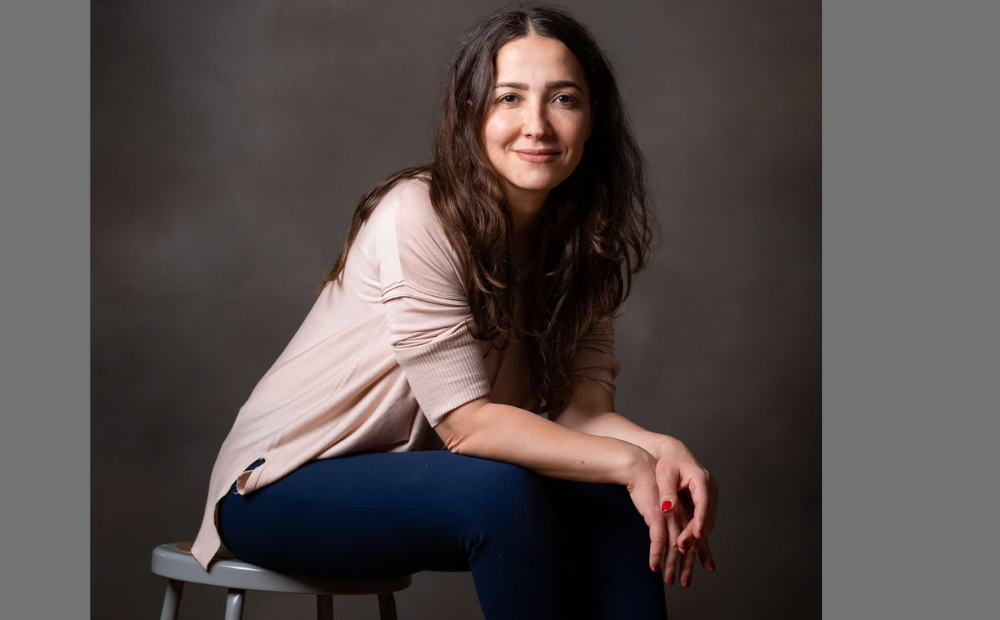
Mouna Hajjar Rashid is a nationally award-winning photographer who contributed her work to the VIPerfect Milwaukee photoshoot.
The photographer
“It worked out very serendipitously,” Abouchaleh said. When she met Joachim and he talked about holding a photoshoot, “I told him I happen to know a wonderful photographer.”
Abouchaleh’s aunt Mouna Hajjar Rashid of Franklin is a nationally award-winning photographer who takes on several pro bono projects each year. She is also the photographer for the Wisconsin Muslim Journal.
“I’m happy about it. It’s a kind of zakat (charity),” Rashid said in a telephone interview.
Rashid talked on the phone with Joachim about his idea. “He explained that he believed a photoshoot would be helpful in changing the whole perspective. Right away, I agreed with that. It is the way I think about photography. While social media photography can do damage, it can also help in so many things. It should be a tool to serve society.”
When Rashid began her career as a photographer, she used Photoshop like everyone else, she confessed. Manipulating photos to make clients look slimmer, their eyes bigger or noses smaller demonstrated her skill as a photographer, she thought.
“I’ve come to believe this is not right. I don’t want to be part of an industry that creates a standard of beauty that is not approachable. It is simply not right to create problems, especially for young females, by creating a standard of beauty that is not real.
“For the past six or seven years, I do not manipulate the photo to present an image that does not look like them. I want to help bring out their best, not alter their appearance artificially.
“I matured into this understanding and I am not the only photographer that refuses to be a part of the problem,” she said. “When I heard about this photoshoot, I realized it was also a way to be part of the solution.”
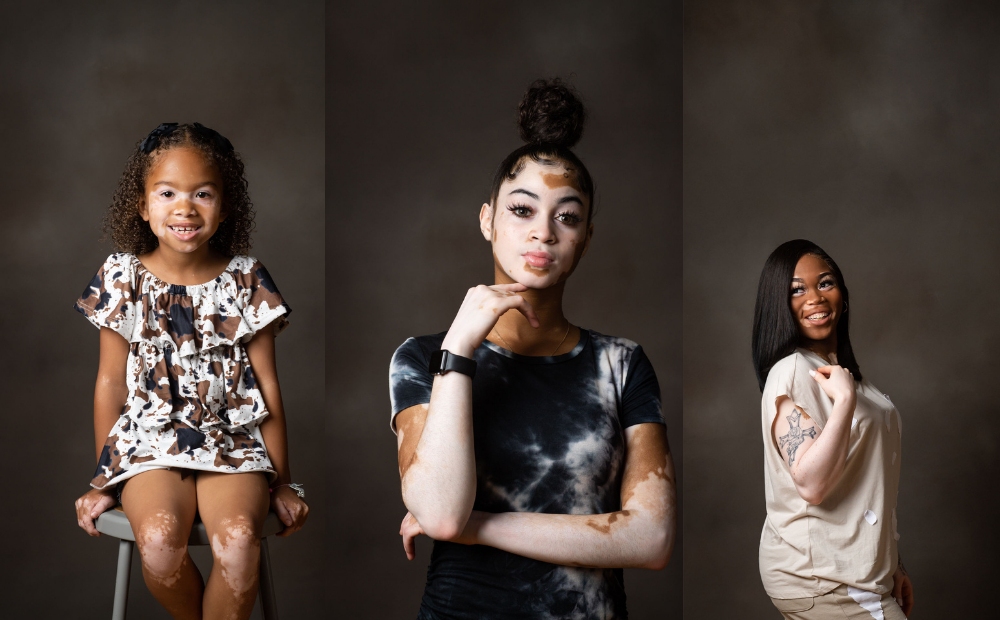
The photoshoot
Rashid contacted the owners of Anodyne Coffee Roasters Café in Milwaukee’s Public Market. She had heard they had graciously welcomed other community initiatives. “I know they are good people. As soon as I approached them, they were very accommodating,” she said. “They like to host events that benefit the community. They helped me get the studio inside and the day before they had worked on the space to accommodate the photoshoot.”
Joachim invited people in Wisconsin and Northern Illinois through the vitiligo online communities. He was there ahead of time to greet them when they arrived. A teenage girl from Green Bay drove down and a woman from Chicago came up. The rest of the participants were from Greater Milwaukee.
Although 20 signed up, many canceled. Eight participated in the two-hour photoshoot. The group shared food together.
“It was lovely,” Rashid said. “All the people were so happy. One of them said she was scared before coming but really enjoyed it.”
“One of the mothers in the photoshoot said, ‘I refuse to let my daughter wear makeup because I want her to see that she is naturally beautiful.’ Now her daughter is a talented athlete, she does modeling and everything else,” Joachim said.
“It was nice to see the younger girls looking up to the other females who welcomed the opportunity. The youngest was six or seven. They felt they were not alone,” Rashid added.
“I observed older adults who were very proud and comfortable in their own skin,” said Abouchaleh, who also attended the photoshoot. “They embraced everything about themselves. It might have taken many of those people years to feel that comfortable.”
The youngest girl did her shoot first. She was a bit reserved. After she had finished and changed clothes, she watched the others. When they finished, she wanted another turn, Rashid said. “Her attitude had changed. She was having fun.”
Joachim shared the photos on social media in vitiligo groups. More people called and said “if we do it again, they want to participate. Now I have a lot of people who want to be a part of this.”
“We hope to do this again in six or seven months,” Rashid said. “And more will join.”
“One of the most important things I learned that day as a medical professional,” Abouchaleh reflected, “we always want to treat everything. I learned a lot of people embrace and celebrate having vitiligo. They don’t call it a disease. They see it as a way of life. They like the unique way they look.”
